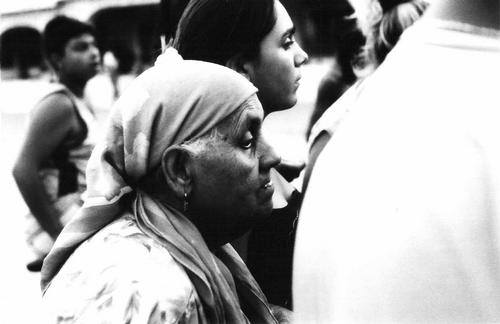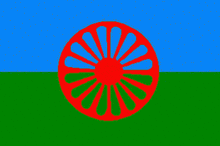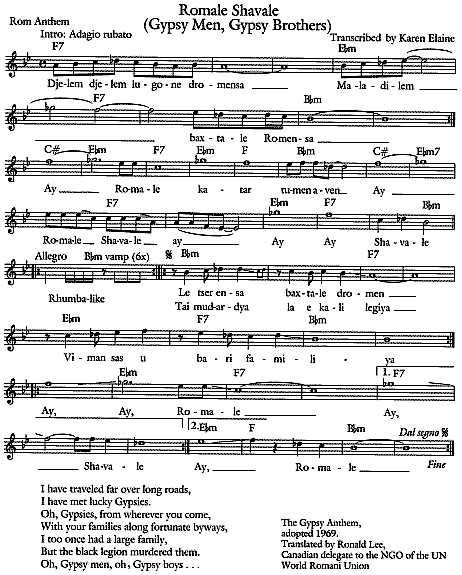History Planet
"There are four hundred books on the gypsies", says a modern expert of Rom, "but in all not more than ten of which tell us anything new or true about them"

Name
The Romani people have been known by many names, including Gypsies (or Gipsies), Tsigani, Tzigane, Cigano, Zigeuner, and others. Most Roma have always referred to themselves by their tribal names, or as Rom or Roma, meaning "Man" or "People." (Rom, Roma, Romani, and Romaniya should not be confused with the country of Romania, or the city of Rome. These names have separate, distinct etymological origins and are not related.) The use of Rom, Roma, Romani, or the double "r" spelling, is preferred in all official communications and legal documents.
In response to the recommendations put forth by Roma associations, the Council of Europe has approved the use of "Rroma (Gypsies)" in its official documents (CLRAE Recommendation 11 - June 1995). The trend is to eliminate the use of derogatory, pejorative and offensive names, such as Gypsies, and to be given proper respect by the use of the self-appelation of Roma, or Rroma.
Population
There are more than twelve million Roma outside of India located in many countries around the world, whose origins began on the Indian subcontinent over one thousand years ago. They have dispersed worldwide, despite persecution and oppression through the centuries.
There is no way to obtain an exact number since they are not recorded on most official census counts. Many Roma themselves do not admit to their true ethnic origins for economic and social reasons. The Roma are a distinct ethnic minority, distinguished at least by Rom blood and the Romani, or Romanes, language, whose origins began on the Indian subcontinent over one thousand years ago.
The first European descriptions of the Roma upon their entering Europe emphasized their dark skin and black hair. Through integration with Europeans over the centuries, Roma today can also be found with light skin and hair.
Migration
No one knows for certain why the original Roma began their great wandering from India to Europe and beyond, but they have dispersed worldwide, despite persecution and oppression through the centuries.
There have been several great migrations, or diaspora, in Romani history. The first was the initial dispersal from India about a thousand years ago. Some scholars suggest there may have been several migrations from India. The second great migration, known as the Aresajipe, was from southwest Asia into Europe in the 14th century. The third migration was from Europe to the Americas in the 19th and early 20th centuries after the abolition of Romani slavery in Europe in 1856-1864. Some scholars contend there is a great migration occurring today since the fall of the Iron Curtain in Eastern Europe.
Nazis
The Nazi terror, between the years 1939-1945, is the most infamous and is responsible for the deaths of up to 1.5 million Roma in the Porrajmos (Holocaust). Roma were executed in the concentration camps by the nazis all around Europe during the second World war. There have been many large-scale, state-sponsored persecutions, or pogroms, against the Roma throughout European history.
Nowadays, is it nazis?
The recent collapse of the communist governments of Eastern Europe have rekindled anti-Roma sentiment in Eastern and Western Europe. Violent attacks against Romani immigrants and refugees have been permitted to occur with little or no restraint from government authorities. The Romani people remain the least integrated and the most persecuted people of Europe. Almost everywhere, their fundamental civil rights are threatened. Racist violence targeting Roma is on the rise after the fall of Communism. Discrimination against Roma in employment, education, health care, administrative and other services is observed in most societies, and hate speech against them deepens the negative anti-Roma stereotypes which are typical of European public opinion.
Anti-Roma attitudes also exist in the Americas to one extent or another. Misrepresentations of the Romani people in the popular press, books, films and television have contributed to negative stereotypes and characterisations. Special "Gypsy" units in some local police forces exist to warn the gadje population of "Gypsy" activities !!!
In the last few years, the Roma issue has been addressed by various non-governmental organisations, national as well as international. Different approaches - economic, social, political, cultural, and others - have been applied in the hope of improving the living standards of the Roma, of promoting a more just social policy, of strengthening Roma cultural identity, or of encouraging Roma political participation.
These recent projects are fragments of a growing all-European Roma movement that is now only in its formative stage. The shape of this movement is still amorphous and incomplete. There still exists no significant internationalised human rights strategy initiative to monitor the human rights situation of the Roma and to provide legal defense in cases of human rights abuse.
Culture
Romani culture is diverse and there is no universal culture per se, but there are attributes common to all Roma: loyalty to family (extended and clan); belief in Del (God) and beng (the Devil); belief in predestiny; Romaniya, standards and norms, varying in degree from tribe to tribe; and adaptability to changing conditions.
Romani customs and traditions are as diverse as the number of Roma nations and the countries they inhabit. Generally, there remains a fine cultural thread which holds the Roma people together, no matter where they may be. One thing to keep in mind while reading these articles is that what may hold true for one Roma nation in one part of the world may be very different for another nation elsewhere.
International Romani Day
April 8 was proclaimed International Romani Day. There have been four World Romani Congresses to date. Among the chief goals of these meetings are the standardization of the Romanes language, reparations from World War II, improvements in civil rights and education, preserving Romani culture, and international recognition of the Roma as a national minority of Indian origin. Among the chief Roma organisations, the International Romani Union has consultative status to the United Nations Social and Economic Council.

Flag
It comprises of blue and green traditional colors with the red wheel in the center. Blue is the blue sky and the heavens. Green is the land, organic and growing. The blue symbolizes eternal spiritual values; the green earthly values. The wheel in the center symbolizes movement and progress.
The spoked-wheel image above represents a sixteen-spoked chakra, adopted at the First World Romani Congress in London in 1971 as the international Romani symbol. The chakra is a link to the Roma's Indian origins (the 24-spoked Ashok Chakra is in the center of the national flag of India, the Tiranga) and represents movement and the original Creation. The green and blue flag with a red chakra in the center was adopted as the Romani flag, as well as the motto "Opré Roma" (Roma Arise).
Anthem
DJELEM DJELEM - THE ROMANI ANTHEM
Written by Zarko Jovanovic, 1969
Adopted as the official Romani anthem at the
First World Romani Congress in
London, England, April, 8, 1971Romani
Djelem, djelem, lungone dromensa
Maladilem baxtale Romensa
Djelem, djelem, lungone dromensa
Maladilem baxtale Romensa.
Ay, Romale, Ay, Chavale,
Ay, Romale, Ay, Chavale.
Ay Romale, katar tumen aven
Le tserensa baxtale dromensa
Vi-man sas u bari familiya
Tai mudardya la e kali legiya.
Aven mansa sa lumiake Roma
Kai putaile le Romane droma
Ake vryama - ushti Rom akana
Ame xutasa mishto kai kerasa.
Ay, Romale, Ay Chavale,
Ay, Romale, Ay Chavale. English Translation by Ron Lee
I have travelled over long roads
I have met fortunate Roma
I have travelled far and wide
I have met lucky Roma
Oh, Romani adults, Oh Romani youth
Oh, Romani adults, Oh Romani youth
Oh, Roma, from wherever you have come
With your tents along lucky roads
I too once had a large family
But the black legion murdered them
Come with me, Roma of the world
To where the Romani roads have been opened
Now is the time - stand up, Roma,
We shall succeed where we make the effort.
Oh, Roma adults, Oh, Roma youth
Oh, Roma adults, Oh, Roma youth.
